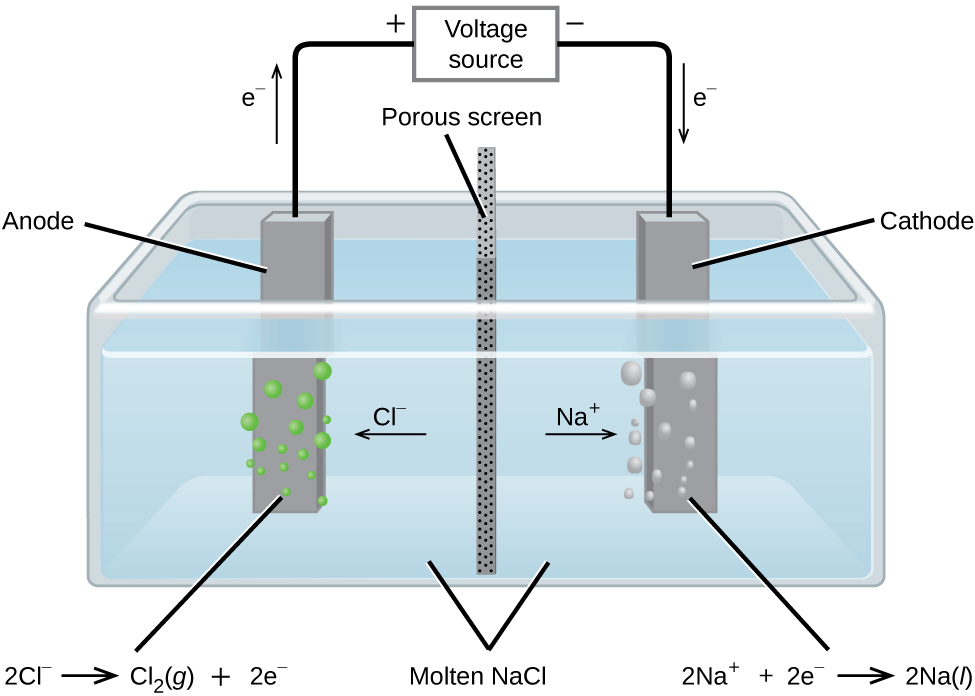Metallic sodium, Na, and chlorine gas, Cl2, are used in numerous applications, and their industrial production relies on the large-scale electrolysis of molten sodium chloride, NaCl(l). The industrial process typically uses a Downs cell similar to the simplified illustration shown below. The reactions associated with this process are:
anode: 2Cl−(l) ⟶ Cl2(g) + 2e−
cathode: Na+(l) + e− ⟶ Na(l)
cell: 2Na+(l) + 2Cl−(l) ⟶ 2Na(l) + Cl2(g)
The cell potential for the above process is negative, indicating the reaction as written (decomposition of liquid NaCl) is not spontaneous. To force this reaction, a positive potential of magnitude greater than the negative cell potential must be applied to the cell.
